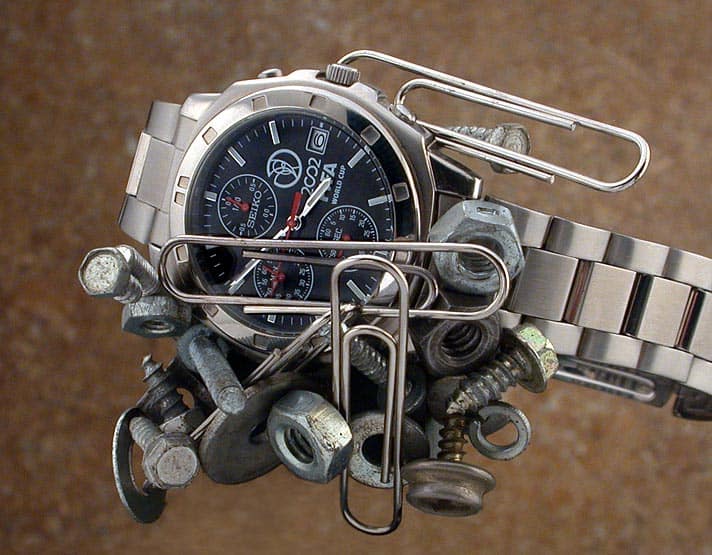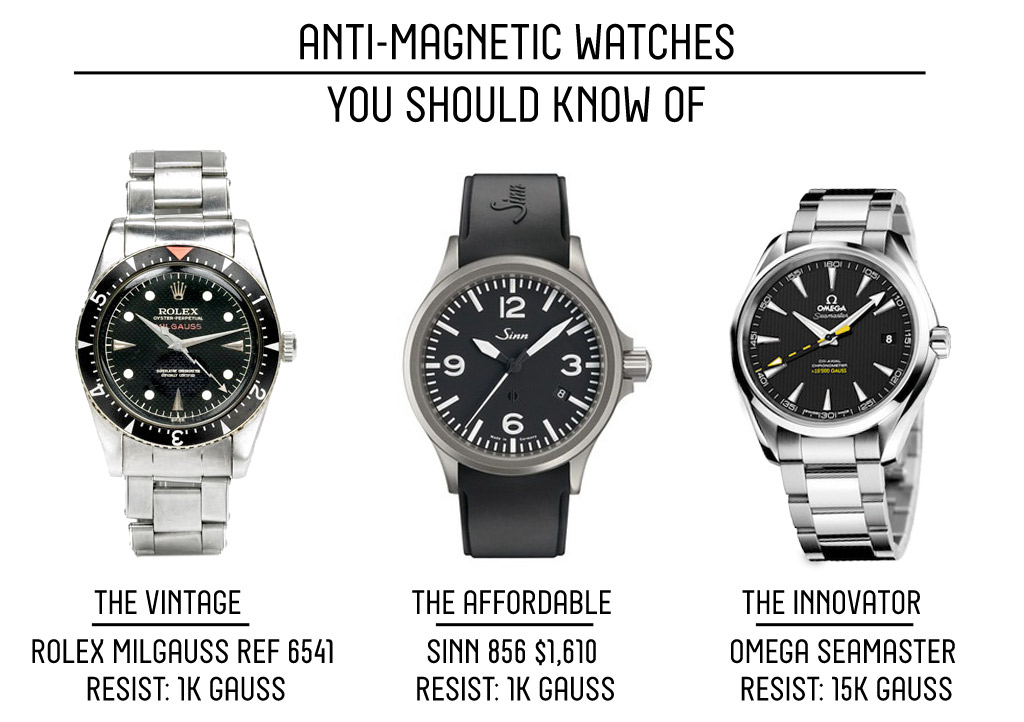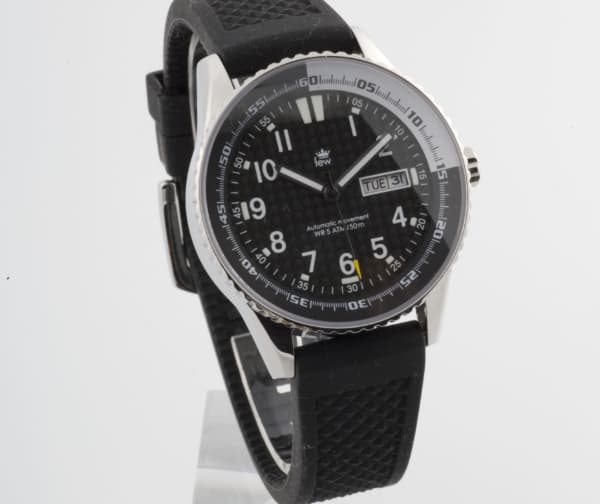Throughout their development and history wristwatches have evolved to keep up with the needs of the wearers. Wheather that be for diving (water resistance; lume), travelers (dual time zones) or pilots (slide rule) the maufactures have provided timepieces with specific applications to assist certain professions and even protect the watch from potential exposure that may cause the watch harm. One of these elements, that perhaps many of us do not think about, is magnetism.
Just like most any other metal material a watch can become magnetized when it comes into contact with certain levels of a magnetic field. Magnetic fields can be found in things as simple as a set of speakers, or magnetic bracelet to radio waves, microwaves and even X-rays. For many of us the limited contact we have with such magnetic fields produces little to no noticeable affect on the operation of our watches. However, if you do encounter such a field you may notice your watch behaving not as you would expect.
The most common effect of a magnetic field on a wrist or pocket watch is to cause the watch to run fast. Remember that the components inside that tiny little machine on your wrist are metals and many – I’m looking at you, balance spring – are quite fine and easily could be affected. The magnetic field can actually cause the individual coils to stick together, having the effect of shortening the spring and thereby speeding up the watch. In most cases it will be a quite dramatic change, to where the watch could be minutes fast in a day rather than seconds. If you suspect your watch may be magnetized you can take it to your local watchmaker (if you are lucky enough to have one) or check this yourself by using a standard needle compass. The magnetic field now given off by the watch will move the compass needle (a demonstration can bee seen here).
 If your watch is magnetized it will have to be demagnetized to again work properly. As with testing for a magnetized watch, you can also do the reversal yourself. It takes a product called a demagnetizer that can be found on-line for frequently less than $50 via a number of sellers or online retailers such as Amazon or eBay (buy from someone you trust, though). It should be a simple process of passing the watch back and forth over the device to remove the magnetic field thereby returning operation to normal. If you are not sure of doing this yourself and have access to a local watchmaker, you can certainly have them do it for you as well. Aside from demagnetizing they can check the movement for any damage from the magnetic field and regulate the watch as well if needed.
If your watch is magnetized it will have to be demagnetized to again work properly. As with testing for a magnetized watch, you can also do the reversal yourself. It takes a product called a demagnetizer that can be found on-line for frequently less than $50 via a number of sellers or online retailers such as Amazon or eBay (buy from someone you trust, though). It should be a simple process of passing the watch back and forth over the device to remove the magnetic field thereby returning operation to normal. If you are not sure of doing this yourself and have access to a local watchmaker, you can certainly have them do it for you as well. Aside from demagnetizing they can check the movement for any damage from the magnetic field and regulate the watch as well if needed.
Having one’s timepiece be affected by magnetic fields is not a result of the mechanical revolution of the 20th century, as one might be inclined to think. In fact the first experiments in producing an anti-magnetic watch originated in 1846 by Vacheron Constantin. Although their experiments took a few years Vacheron did become the first to produce an anti-magnetic pocket watch in 1915, while Tissot was the brand to assemble the first anti-magnetic wrist watch in 1929. Today there are a number of watches specifically designed to withstand high levels of a magnetic field, and an ISO standard (International Organization for Standardization) to define such a watch (ISO 764:2002 Horology – Magnetic resistant watches). In fact even today’s diver’s watches by ISO standards need to be anti-magnetic (ISO 6425).
A magnetized watch will most likely never be encountered by most average watch enthusiasts. Both the likely hood of being in the vicinity of such a strong magnetic field and the construction of modern watches should ensure this. Those who work in such conditions are going to be well aware of the dangers presented to their timepiece and have taken proper steps to have a well protected watch or – hopefully not – will not wear a watch at all.
by James Enloe









 Featured Videos
Featured Videos









